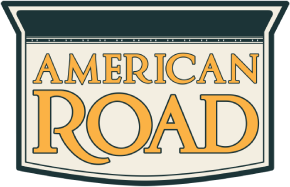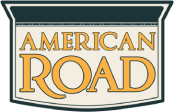Fuel Road Trip Dreams with AMERICAN ROAD
Whether your destination is Portland, Oregon, the Colorado Rockies, cruising down Route 66, or you're dreaming of driving down the scenic highway in California, destined for Mono Lake, or not sure where to road trip to, we invite you to let American Road Magazine be your one-stop source!
You’re cordially invited to roam our website - the complete source for on-the-road travel and vacation information. Don't forget to subscribe to the print or digital edition for even more insider information. We even offer travel contests and giveaways that you don't want to miss! Bon Voyage.
In This Issue
We all know Kermit, the charming amphibian superstar from The Muppets, who pondered the philosophical depths of rainbow songs in The Muppet Movie. Turns out, we're all Kermit in some ways—don't we all hunt for our personal rainbows? Maybe your road trip is just a camouflage for your inner rainbow-chasing Kermit. In this issue of AMERICAN ROAD, we replace the magnifying glass with a kaleidoscope to inspect The Muppet Movie, the epitome of a dashing pursuit for prismatic bliss! You never know, by the end of this edition of AMERICAN ROAD, you might stumble upon your very own rainbow. Or at the very least, a friendly frog driving a Studebaker.
Our lead feature is a duo interview with Kermit and Fozzie from The Muppet Movie. It was no easy feat getting that pair into a room to discuss The Muppet Movie forty-six years after the film’s release. But after lengthy negotiations, the assuaging of all agents, and our ironclad assurances that Miss Piggy would never be made privy to anything said, the two stars agreed to grant us this rare sit-down.
The Studebaker National Museum of South Bend, Indiana, is working to restore the vintage car that belonged to Fozzie in The Muppet Movie. We drop by to see how the project proceeds—learning a lot about Studebaker history in the process—before introducing our readers to the winners of our American Road “Movin’ Right Along” Photo Contest. From there, we get lost inside the Royal Canadian Mounted Police Heritage Centre in Regina, Saskatchewan; cross the famous Frog Bridge between Windham and Willimantic,
Connecticut; compare the soles of our Keds and Buster Browns to those imprinted in cement at the former Grauman’s Chinese Theatre in Hollywood; and check out the new Muppet exhibits at the Center for Puppetry Arts in Atlanta. We gas up at Frog Level Service Station in Tazewell, Virginia; grab a snack at T-Bab’s Drive-In in Rayne, Louisiana; then park for the night at the Rainbow Motel in Greeley, Colorado.
Pack your bags and go find a rainbow of your own!
Anson Williams of Happy Days talks about AMERICAN ROAD® magazine. Check out the video!













